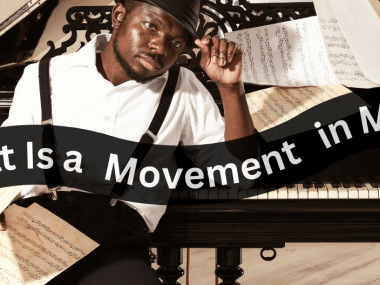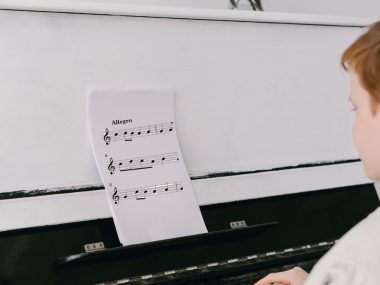When one thinks of texture, it’s almost always associated with cloth. It’s odd to associate texture with music, but it so happens that texture is an important factor in music.
The moment you hear the word ‘texture,’ the first thing that probably pops into your mind is the feeling of the surface of an object. But as it turns out, when it comes to music, texture takes an entirely different meaning. Musical texture takes on the form of sound rather than touch.
Seeing texture can be difficult to understand in music, we’ve decided to tackle the subject in this in-depth post. Stick around!
What Is Texture in Music?
Texture in music is basically how the sound is organized and how complex it is. Though, this is just barely scraping the surface.
Texture, in an inanimate object, is the way said object feels to the touch. In music, however, it’s defined more in terms of dynamics, rhythm, and range.
Say you’re listening to a musical piece. Each musical piece is made up of multiple layers.
These layers include the harmonies, rhythm, and melodies. These combined layers, along with musical form, timbre, and tempo make up the musical texture of the piece.
Think of it as a puzzle. Each puzzle piece is one of those elements. Once you put all the pieces together, it makes up the “picture” or the musical texture.
If one of those elements is slightly changed (say you increased the tempo), the entire picture, or texture, of the piece automatically changes as well.
How Can One Describe Texture?
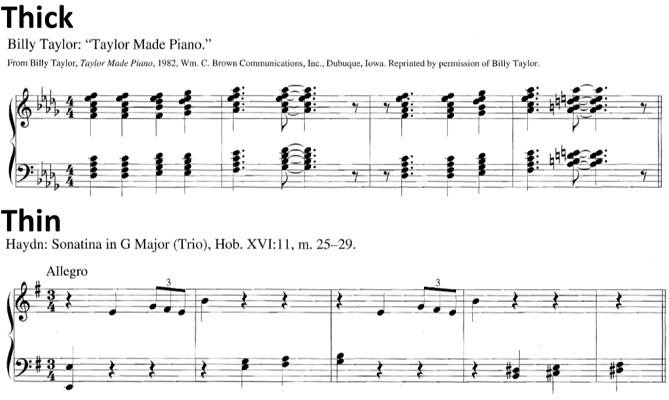
There are many words used to describe texture in music. Thin, thick, open, closed, and even tight, are just a few words often used to describe musical texture.
If someone describes the texture of a song as “thin,” that means there aren’t many instruments being played, and not a lot of melodies and harmonies.
As opposed to “thick” texture, where there are a lot of instruments used and thus, many layers, melodies, and harmonies.
The “open” texture is when there’s an extremely huge gap between the highest and lowest note in a piece of music, while the “closed” texture is the exact opposite.
While these simple words sometimes can sum up the texture of a musical piece, there are more complex and specific words that describe the types of textures. Let’s talk more about that.
Types of Texture in Music
In music, there are four types of textures, namely monophonic, homophonic, polyphonic, and heterophonic.
Any piece of music in existence will fall into one of those four categories. If it doesn’t, then it’s probably a mesh between the two of them.
It’s impossible for a piece of music to not belong to any of those categories or at least part of them.
Monophonic
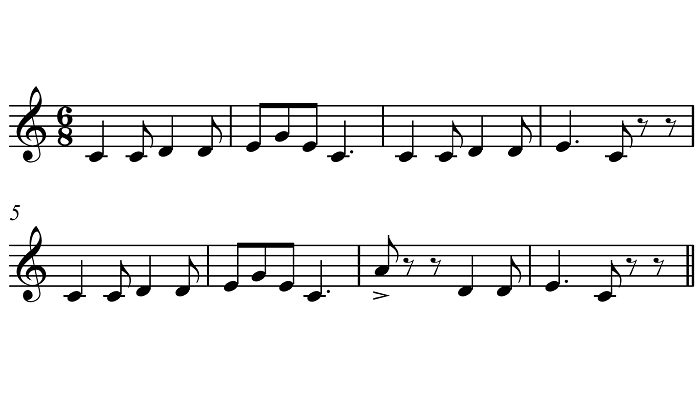
The monophonic texture is the simplest form of musical texture.
This texture is typically found in a song that’s made up of a single melody, or one that’s sung by one person or several people singing in unison.
This doesn’t come as a surprise because the word ‘mono’ is the Greek word for ‘one.’
Music with a monophonic texture has no harmonies and consists only of a single melody. In such pieces of music, the same notes and a consistent rhythm are played throughout the song.
One of the most common uses of the monophonic texture is being used to create hooks, which is the part of the song that’s most likely to be remembered and the one that’s likely to get stuck in the listener’s head.
Examples of Monophony
One of the most famous examples of monophonic songs is the Alphabet Song and the Birthday Song. In fact, the monophonic texture is very common in children’s nursery rhymes.
Songs like Twinkle, Twinkle, Little Star and Mary Had a Little Lamb are examples of songs that have monophonic texture.
Also, if someone whistles a song, it’s considered a monophonic version of the song since only one “instrument” is being used.
Homophonic
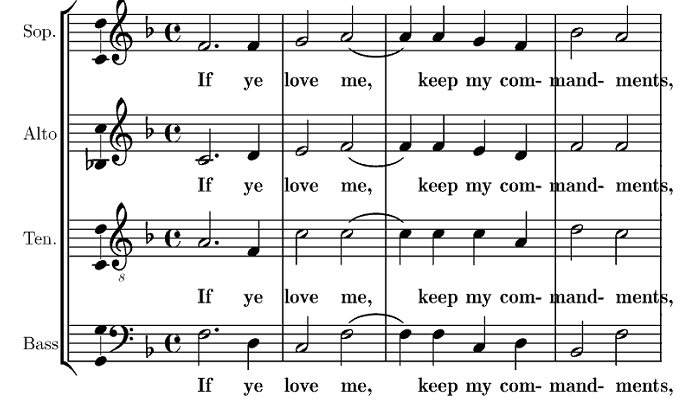
A homophonic texture applies to any song that has one melody, but multiple people singing different parts, thus creating harmony. This is what makes homophonic texture different from monophonic texture.
Like the word ‘monophonic,’ the word ‘homophonic’ also has a Greek origin. ‘Homo’ in Greek means ‘same,’ and ‘phonic’ in Greek means ‘sound.’
So, homophonic literally means ‘same sound.’
So, how does homophonic texture work? It’s when the melodic line is played accompanied by many different notes. It’s still the same melodic line, the only difference is that it’s centered around a lot of other different notes that make the overall sound extremely rich and dynamic.
Another way a homophonic texture can be created is when a group of people sings the same song, with the same melody, but with different notes.
Examples of Homophony
Homophonic sounds can be found in both modern songs and classical music. A good example of a homophonic melody is Ludwig Van Beethoven’s “Seventh Symphony, Movement II.”
An example of a modern song with a homophonic sound is Joni Mitchel’s “Big Yellow Taxi.” Like all homophonic songs, this song has only one vocal melody, but it’s backed by chords. In this case, it’s the guitar played by Mitchel in the background.
A famed example of a song with a great homophonic texture is Olivia Rodrigo’s “Driver License.” While the entire song isn’t homophonic, its bridge consists of many harmonies layered above each other, which is homophony in its basic form.
Another good way to spot homophonic texture is to listen to any acapella version of any song. Acapella versions are considered entirely homophonic.
Polyphonic

The third type of texture is the polyphonic texture. Like its previous counterparts, ‘poly’ is also the Greek word for ‘many.’ So, we can conclude that polyphonic music is music made up of multiple sounds.
One of the earliest and most famous people to use polyphonic textures in his music was Perotinus Magister. It’s believed he was one of the original composers who made use of the polyphonic texture.
The polyphonic texture is basically multiple melodies working together to create a song. Originally, polyphonic sounds were created when two independent songs were sung at the same time.
Keep in mind that polyphonic songs’ melodies are all important and all melodies have to occur simultaneously for the song to be considered polyphonic.
Polyphonic texture has an interesting history. It was first discovered during the middle ages, and after more development, it came back with full force in the Renaissance period.
Polyphonic sounds are prevalent with round songs, canons, and fugues.
Examples of Polyphony
Examples of polyphony can be found in nursery rhymes like Row, Row, Row, Your Boat and Frère Jacques.
Some classical music has polyphonic textures. A lot of Bach’s music is polyphonic. Also, a great classic example of polyphonic music can be found in Baroque music.
A great modern example of polyphonic music or songs is the modern mixes of any two songs. Those are mostly the works of DJs.
You can easily make any other texture polyphonic if you decide to add another melody in the song while it’s playing.
Heterophonic
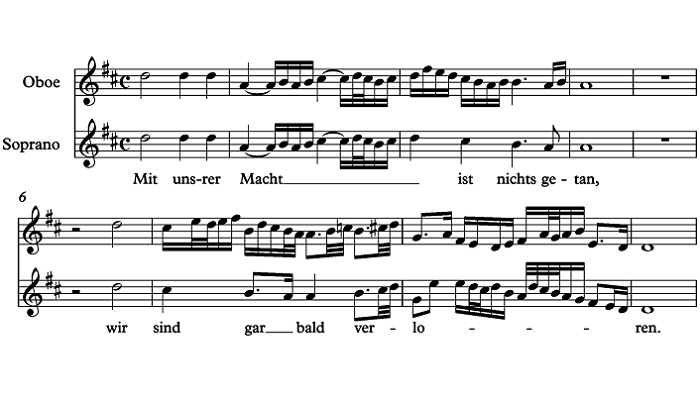
Lastly, there’s heterophonic music. Now, while heterophonic music is broadly used in musical compositions around the world, it’s not particularly popular in western music.
A traditional genre of music where you’ll find a heterophonic texture is Middle Eastern music.
It’s first thought to have emerged following homophonic music, thus heterophonic texture can be considered one of the oldest textures of music. It can be found in traditional folk music coming from Europe, Asia, and the Middle eEast.
So how is the heterophonic texture created?
The heterophonic texture is when multiple instruments play almost identical melodies, but each instrument uniquely plays the melody.
So, all in all, heterophonic texture is basically multiple melodies being played, using different instruments.
Examples of Heterophony
While it doesn’t seem presumable, having already said it’s not common with western music, there’s some classical music that employed heterophonic texture to their sounds.
A good example is Mozart who used it in one of his concertos.
Another example of heterophonic music can be found in bluegrass music, as well as some mountain music. It’s also used in Native American traditional folk music and hymns.
Other Types of Texture

Even though we mentioned that the above types are the main types of textures, some other types have to be talked about.
Some music actually combines different types of texture to create whole different textures.
Let’s discuss the other types of textures currently known.
Contemporary Texture
Even though we’ve talked about the classical types of textures, there’s one particular type that’s sometimes overlooked.
Contemporary, or modern texture, which is also referred to as micropolyphony, was first discovered by György Ligeti.
This particular texture is created by the shifting of the sustained chords slowly and over a while. So, basically, it’s timbres, rhythms, and lines being played simultaneously but in different ways.
This is achieved bymerging multiple polyphonic sounds without changing anything about them.
Present-day use of micropolyphony texture can be found in the soundtrack of the film “2001: A Space Odyssey” by Stanley Kubrick.
Biphonic Texture
The biphonic texture, as its name suggests, is a texture that contains only two melodies that are played simultaneously.
This texture is made up of two lines. One of the lines is a consistent line; a melody that’s played and doesn’t change throughout the song. The other line is a melody that constantly changes and has a more intricate side to it.
One of the finest examples of biphonic texture can be found in Mozart’s pedal tones. It can also be found in some modern pop songs such as “I Feel Love” by Donna Summer.
Antiphonal Texture
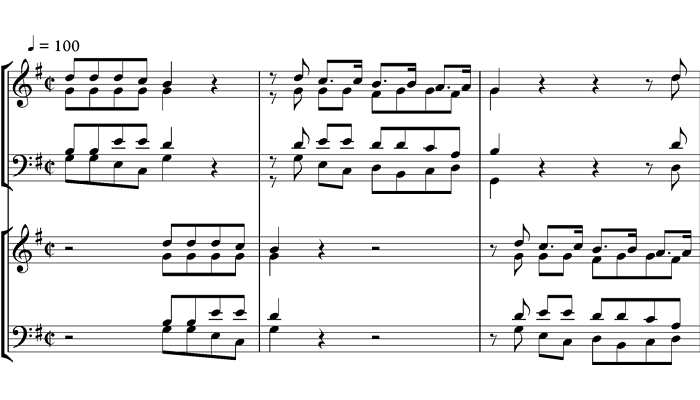
The antiphonal texture is a pre-modern texture that was traditionally used in churches back in the olden days.
So, what is antiphonal texture? It’s when there are two groups of people singing, interactively, accompanied by an instrumental background.
They’re usually accompanied by dialogue in between, and said dialogue isn’t limited to one area of the music but scattered throughout the piece in different parts.
They also don’t sing together, but they sing alternatively, taking turns singing while the music is playing in the background.
While not presently used anymore, it can be found in the folk music of some African cultures as well as the music of Yemenite jews.
One of the most common names associated with Antiphony is composer Giovanni Gabrieli who used a lot of antiphony in his works back in the renaissance.
Combining Different Types of Musical Textures
The existence of a combination of different textures is indisputable. Take the combination of monophonic and polyphonic textures, for example, commonly referred to as a monody.
This combination is fairly common in instrumental music. It’s achieved by adding and/or removing specific textures at varying times throughout the song.
A renowned example that employs this is “Wake Me Up” by Avicci.
Music is limitless. Even the aspects of music that are set in stone can be combined to make way for new, exciting aspects.
It’s the same thing with musical textures. One can combine two or more textures to create an entirely different texture.
Why Is Musical Texture Important
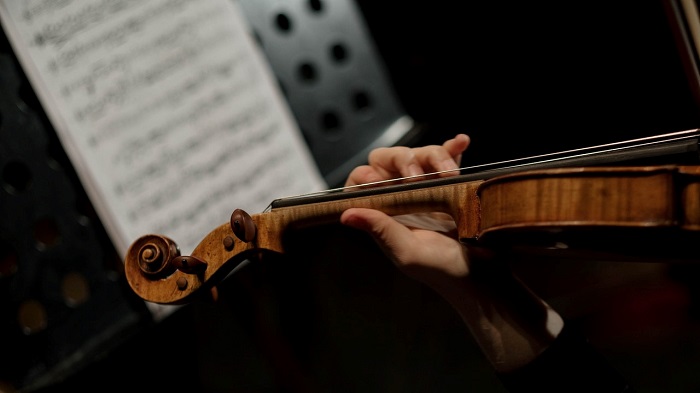
There’s a reason why there’s a huge emphasis on the study of musical texture.
Other than showing you how the essence of some songs is made, composers need to learn the texture of the songs or pieces of music.
Musical texture is particularly useful for composers because it creates drama and richness to the sound.
It also plays an important part in creating contrast, especially if composers want to compare two different classical musical pieces.


